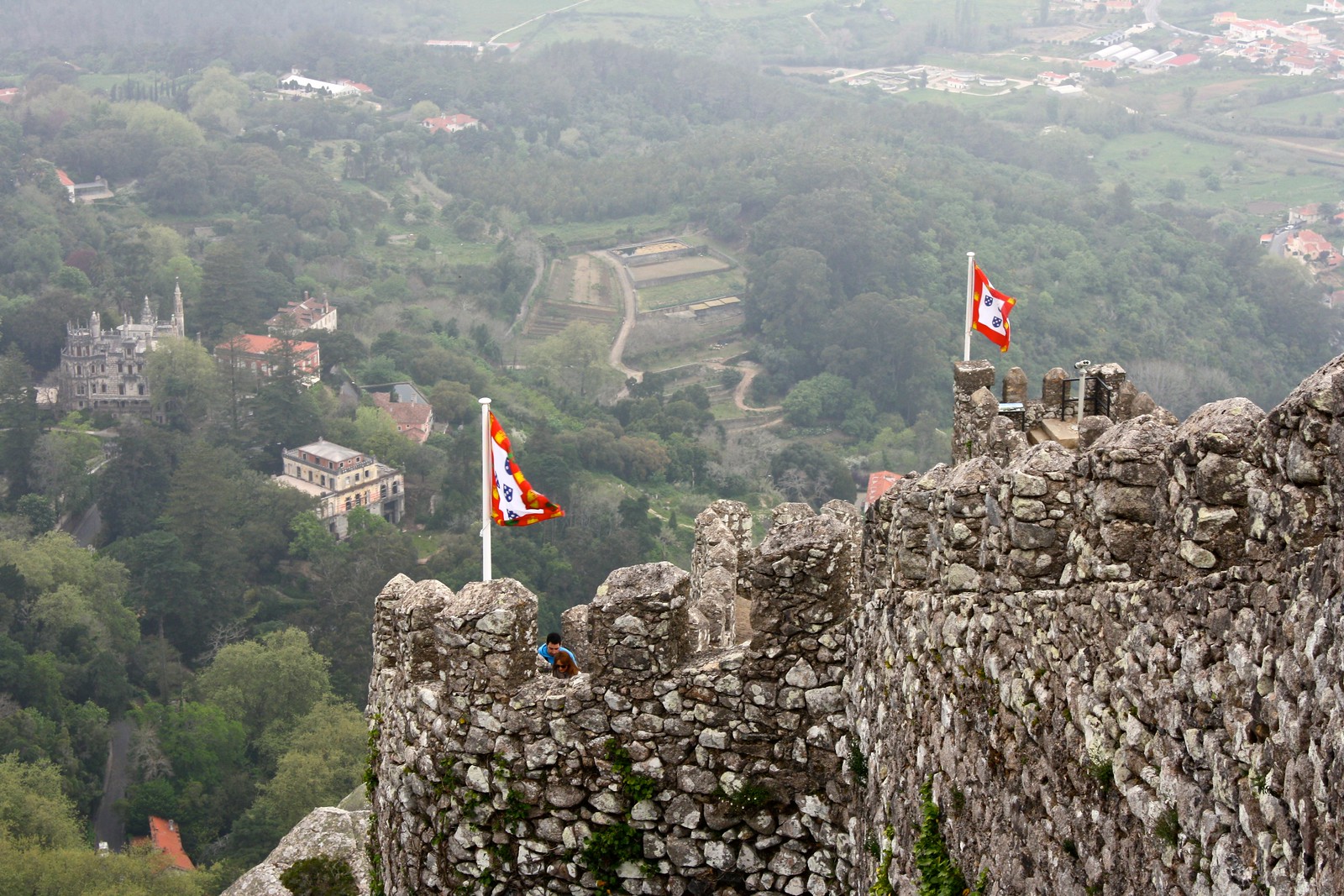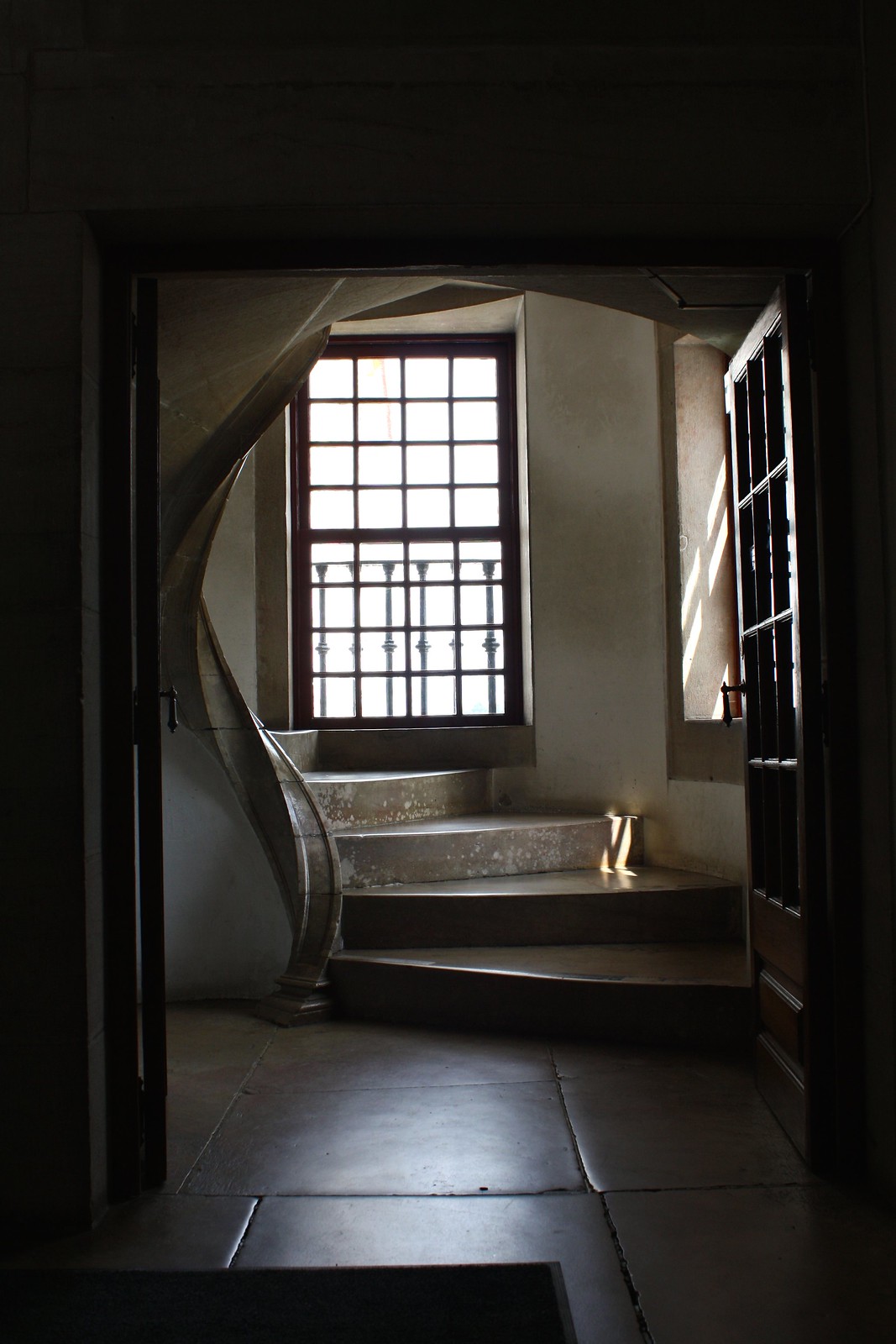While I was kickin’ around in
Lisbon this April, I took a couple daytrips from the city center to some admittedly touristy destinations. A modern-day tram that shares tracks and wires with the creaky, classic Tram 28 took me to the coastal neighborhood of
Belém, a World Heritage Site dripping with history, museums, glorious architecture…and pastries. The next day, I hopped on a speedy regional train from the Rossio station to the nearby city of
Sintra.
Inhabited since time immemorial, Sintra’s picturesque location perched on a hill between the Atlantic coast and Lisbon has made it an attractive place for kings, the wealthy, and daytrippers alike. Famous for its mystical fog and pleasing natural surroundings, Sintra became a favorite retreat in the 1800s. Relics from the Middle Ages (like the Sintra National Palace) or from Portugal’s Islamic past (like the Castle of the Moors) played in to the age’s prevailing
Revivalism and
Orientalism. And Sintra’s dramatic, rugged setting caused the emotions of the
Romantics to run wild.
Today Sintra is one of the most popular daytrip destinations for tourists visiting Lisbon, and for most of the same reasons it was all the rage in the Romantic era: beautiful architecture, a stunning natural backdrop, and stirring views.
Castelo dos Mouros (Moorish Castle)
Like I said above, Sintra occupies the highest point between Lisbon and the Atlantic, which has made it a key point of military control since Roman times. When Lisbon was known as
al-Ishbuna during the Muslim Caliphate, an imposing fortress was built here on the mountain to complement the São Jorge Castle in Lisbon proper.
I loved exploring this castle, huffing and puffing up the stairs and wiping sweat (or fog?) off my forehead, because it was simply so much more interesting than other castles I’ve been to (which is saying a lot!). Instead of aligning to an idealized square or pentagon formation, the Castelo dos Mouros
organically flows along the natural inclines of the hillside—more like the Great Wall of China than the defensive ramparts of a flat city.
Emerging from a deeply-wooded forest, the castle commands a hilltop that is surrounded by fog more often than not, a mystical vantage point from which to take in the views of the landscape below: the trains arriving at the station, Romantic-era estates sprawling around, and the Pena National Palace perched on a nearby summit in the distance.
Palácio Nacional da Pena (Pena National Palace)
Although “Pena” is usually left untranslated in this palace’s name,
pena in Portuguese means something like “rocky hilltop”—but Rocky Hilltop National Palace just doesn’t have quite the same ring to it. Built in the 1800s over the ruins of a monastery and chapel, it was the favored (but short-lived) summer residence of the king and queen of Portugal between 1854 and 1889, when the palace was purchased by the state.
Wikipedia nicely summarizes the palace’s design: “The Pena Palace has a profusion of styles much in accordance with
the exotic taste of the Romanticism. The intentional mixture of eclectic styles includes the Neo-Gothic, Neo-Manueline, Neo-Islamic and Neo-Renaissance.” Bold, bright primary colors cover the exterior walls of the buildings and contrast nicely with the plain gray stone; Gothic pointed arches can be found side-by-side with Islamic-style pyramid crenellations; and over-the-top detailing and natural flourishes embellish the façades.
Thankfully, the inside is open to the public, and it gives us an interesting peek into the tastes and décor of European royalty in the late 19th century—from kitchens and chinaware to bedrooms and parlors.
Palácio Nacional de Sintra (Sintra National Palace)
If you make it back down to the bottom of the hill fairly close to the train station, you’ll inevitably end up at Sintra National Palace, a royal residence that dates back to the 1400s and that has been continually added on to and improved over the centuries. Although at first glance it looks like a relic from Moorish times, the palace was in fact constructed long after the so-called “Reconquest” of the area by the Portuguese. In Spain, we would call this type of building
mudéjar, or
Gothic-style architecture fused with Islamic modes of decoration like tiles, plaster, and wood.
It’s impossible to miss the pair of fantastical, swooping, whitewashed chimneys that crown the palace. Their unique shape draws up smoke and steam from the palace’s kitchen, and are actually rather boring when you see them from the inside. But combined with the grand Gothic arcade out front, the intricate, colorful Islamic-style tilework on the walls, and the riot of swans and magpies painted on the ceilings of several rooms, this palace is a small but exciting reminder of when the Portuguese Republic was a Kingdom.
How to get there and around
Dozens of fast, affordable trains depart daily from
Lisbon’s Rossio train station to Sintra—but make sure to wait until the train stops at the end of the line; if you get off at
Portela de Sintra you’re gonna have to hoof it into town.
At the main Sintra station, you can hop on the
434 bus operated by Scotturb that runs in a one-way path as follows: train station → Sintra city → Moorish Castle → Pena National Palace → Sintra city. Get the five-euro hop-on-hop-off ticket that is good for one complete circuit of the journey around Sintra and the surrounding hills; while it is possible to hike up to all the major destinations, the hills are strenuous and the trails time-consuming.
If you’ve ever been to Sintra before, what did you think of it? A break from city life or tourist trap? Share your thoughts below in the comments!











